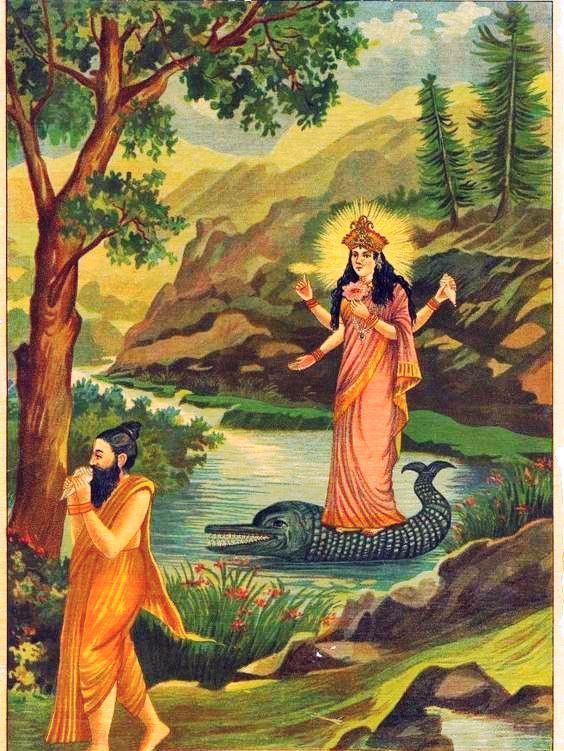River Ganges

Religious Significance
River Ganga, India’s most sacred water body is personified in Hindu mythology as Goddess Ganga. Hindus believe that bathing in her holy waters would help wash one’s sins and aids them in securing a place in the swargaloka(heaven). Several legends are associated with the river. The river is believed to have originated when Brahma washed the feet of Lord Vishnu (during His incarnation as Vamana) using his kamandala or water pot. From this pot Ganga emerged.
Ganga is believed to have brought down to earth by Bhagiratha. He prayed to Lord Brahma to let Ganga come down to earth and then go to patalaloka (underworld). Brahma agreed, and ordered Ganga to descend to earth. Ganga felt insulted and decided to sweep the whole earth as she fell from the heavens. Bhagiratha prayed to Lord Shiva to stop Ganga’s descent. Lord Shiva covered the entire sky with his locks (jata) when the river fell from the heaven, so that not a drop would fall on earth. This manifestation of Lord Shiva is sometimes referred to as Gangadhar.
After He fully captured her, He let her out in small streams. Realising her foolishness, Ganga thereafter followed Bhagiratha wherever he went – down the mountains, across the plains and finally into the sea.

Ecological Significance
From the alpine forests in the Himalayas to the mangroves in its delta, the river Ganga supports a wide variety of flora and fauna including tigers, deer, leopards, gharials, turtles and storks. The river is also home to the Ganga river dolphins (Platanista gangetia), which is endemic to the Ganga-Brahmaputra river systems. It is considered one of the most endangered animal in the region.
Although the spiritual purity of river Ganga has remained unchanged through ages, the physical aspects have deteriorated over the years due to over-exploitation of her waters. Various pollutants including cremated corpses, livestock carcasses, industrial wastes and raw sewage are discharged into the river everyday. There have been many attempts to clean up the river (including the Ganga Action Plan launched by the Government of India in 1985), but none have been really successful.
Apart from the river, recent studies have shown that the Gangotri glacier, the source of the Ganga, has been retreating at an alarming rate. This has been mainly attributed to the increase in population, mass deforestation and global warming. Thus, if measures are not taken up, a holy dip in the river could be a thing of past for the future generations.



Place of Origin: Gangotri Glacier, Uttaranchal
Length: 2510 km
Confluence: Bay of Bengal, Ganga Sagar (West Bengal)